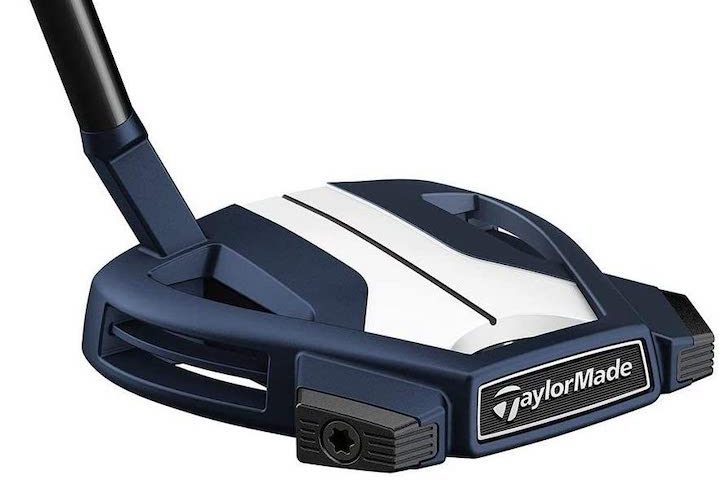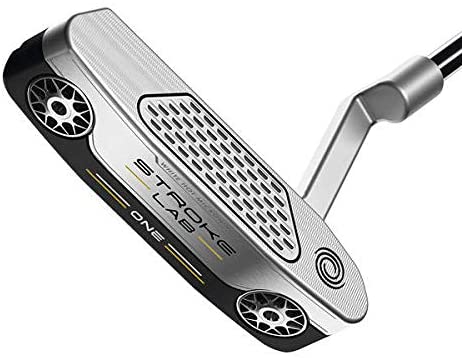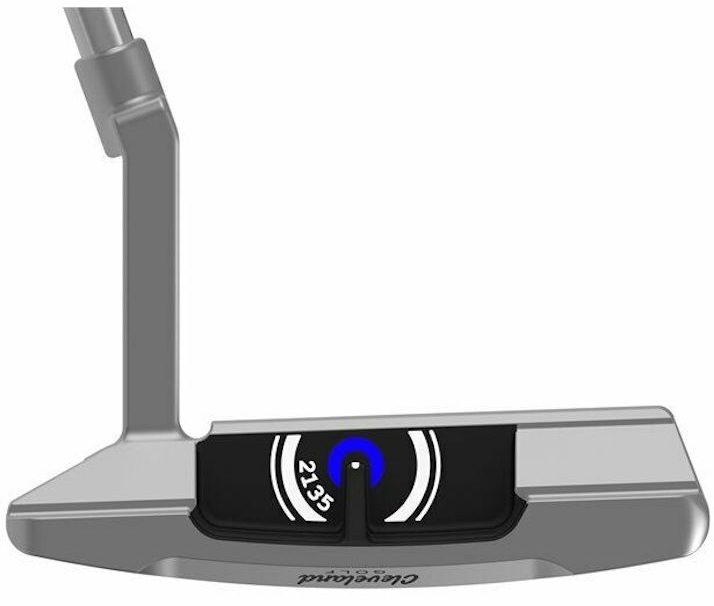Here’s a statistic that may surprise you:
On the PGA Tour, the split between those using a blade vs mallet putter is about 50/50.
The reason that’s probably surprising is that the common assumption seems to be that blade putters are designed for highly skilled players, and mallets are for “the rest of us” who need a little more forgiveness from our putters.
But that assumption is clearly incorrect. Or, at least it’s out of date.
Obviously, when it comes to choosing between a blade vs mallet putter, many amateur golfers prefer blade style putters and many skilled players use mallets.
Which Style is More Popular?
Back in the day, everyone used classic, blade-style putters.
Why? There were no other options. The mallet putter hadn’t yet been invented, and even after it was, its popularity was slow to take hold.
But once people became aware of the benefits of using a mallet, it was off to the races.
In fact, a recent report by Odyssey, the top-selling putter brand in the world, indicated that more than 70% of its sales are now mallets!
If consumer sales of the two styles of putters was a race, the blade style took off to an early and seemingly insurmountable lead, but the mallet style caught up, and every indication is that it is surpassing the blade quite handily now.
That doesn’t mean that blade putters are becoming obsolete. Not at all.
There will always be golfers who simply prefer the clean, minimalist look of a classic blade when they address their putts.
It’s simply a statement of the current trend in consumer purchasing.
Why the Surging Popularity of the Mallet Putter?
In a word, forgiveness.
Quite simply, the larger size of the mallet gives putter design engineers more “real estate” in which to re-position weight around the head, so that it is pushed to the rear of the putter and to its perimeter.
In doing this, they are increasing what is called the Moment of Inertia (MOI).
MOI is a measurement that determines how much a putter face will resist twisting (rotating) when the ball is struck somewhere other than on the sweet spot.
Typically, mis-hits that are struck out toward the toe or in toward the heel will cause the face to twist open or closed, contributing to offline putts.
A putter face that has a high MOI (like most mallet putters) will resist this twisting effect and will maintain its stability, resulting in straighter putts on off-center strikes.
This is probably the main appeal of mallet putters, and a major reason for its growth in popularity.
Yes, blade-style putters do offer some forgiveness, but far less than a mallet.
A typical mallet putter will have about a 30% higher MOI than a blade putter, and in some mallet designs, the MOI advantage can be as much as twice that of a blade.
One other upside for mallets:
Because of the larger flange, designers are able to imprint larger and more effective alignment markings to make it easier to get properly aimed.
Does Putting Stroke Matter?
Yes.
In addition to basic aesthetics and feel (which are very individualistic criteria), there is a more practical and science-based reason for selecting one style versus the other.
And that has to do with the type of putting stroke that each golfer naturally has.
Some players have a natural “arc” stroke when they putt. In a sense, this kind of putting stroke is a miniature replication of a full swing.
On the backswing the head goes on a slight inside arc, and when returning to the ball, the path moves straight going through the impact zone, and then on a slight inward arc again after contact is made.
This putting path is usually referred to as an “inside-to-inside” path.
Watching someone use an inside-to-inside stroke, you can actually see an opening of the blade on the backswing and a closing of it on the through-swing.
Keen observers will notice that Tiger Woods is an example of someone that has an arc putting stroke.
The other type of putting stroke is one that goes “straight-back-straight-through.”
In reality, the fact is that everyone has at least a slight arc in their stroke. Due to the shaft being on an inclined plane (an angle), physics dictates that.
But putters who utilize this path will have far less arc than those whose stroke is inside-to-inside.
Steve Stricker is a PGA player that uses a straight-back-straight-through putting stroke.
The key point to note here is that you would benefit from identifying which one of these two is your normal swing path.
Neither one is better than the other, but it is helpful to know which of the two swing paths naturally occurs during your putting stroke.
Why You Should Know Your Path Type
In addition to having a blade design or a mallet design, putters can be further described using a concept called “toe hang.”
This tends to get into the weeds a little bit, but it’s good to have a basic understanding of this concept so that your ultimate choice of a putter style will be better informed.
Toe hang is the position in which the toe of the putter points if the putter is allowed to hang naturally.
To determine if a putter has toe hang, and how much toe hang, take the putter and balance it lengthwise across your finger.
In a putter with a lot of toe hang, the toe will hang down, angled toward the ground. Putters like this are said to be “toe balanced.”
On putters that have little or no toe hang, on the other hand, the face of the putter will point up to the sky.
These putters are said to be “face balanced".
Why is This Information Important?
The more toe hang that a toe-balanced putter has, the more the clubface will open and close during an arc putting stroke.
Because of this inclination to open and close during the stroke, toe balanced putters are better matched to those possessing an inside-to-inside stroke.
And, though not always the case, most putters that are toe balanced are blades.
Face balanced putters, conversely, tend to remain more square to the target line during the stroke and are therefore more suited to someone who has a straight-back-straight-through stroke.
And, as you might suspect, most (but not all) face balanced putters happen to be mallets.
So, this is why it’s important to identify what your natural putting stroke is.
If you are an inside-to-inside putter, you would usually be better served by using a blade putter.
If you have a straight-back-straight-through stroke, you are likely to be more suited to a mallet putter.
Are These Your Only Style Options?
If this question had been asked a few years ago, the answer would have been “yes.”
But that isn’t the case anymore.
What about the golfer who wants all of the benefits of a mallet (high MOI, etc.), but has an inside-to-inside stroke?
It used to be that this golfer would have been advised to look only at toe-balanced putters (most likely a blade).
But the industry has responded to this type of need with some design changes that now provide this flexibility…. a mallet putter that works for an arc-style swing path.
Introducing the “mid-mallet” putter.
One of the hottest trends in the putter world over the past few years has been the move to a new hybrid mallet style, which has been called a mid-mallet.
Mid-mallets can be thought of as the best of both worlds. They are mallets that offer all of the benefits that mallets provide, but unlike most mallets on the market, they are toe balanced, so they encourage the face to open and close through the putting motion.
The new mid-mallet style has been hugely popular and an unqualified success, not only in the consumer market, but on the Pro Tours as well.
More than half of the Top 50 players in the world now use mallets, many of which feature toe balanced weighting, once the sole province of the blade.
First it was Jason Day, followed by Dustin Johnson, Justin Thomas, and Jon Rahm, all now using a mid-mallet on Tour. And obviously there are many others.
And possibly you, too, if you fit a similar profile.
Blade vs Mallet Putter: Which is Best?
Like the answer to so many of life’s burning questions, the answer is…
It depends.
That’s an unsatisfying response to those looking for finality, but it actually is the truth. It depends on a number of things:
- What kind of path you have, inside-to-inside or straight-back-straight-through
- How much forgiveness you feel you need or want
- Whether you like a lighter weight putter head or one with more mass
- Whether or not you prefer a prominent sight line or alignment aid
- Which style you visually prefer more and find more appealing and confidence-inducing
The good news is that there are dozens of options in all types of styles and price ranges guaranteeing that you will be able to find the ideal one that suits your tastes and needs.
Armed with the information you’ve gained from this article, you can shop for and test all of the various styles -- blades, mallets and mid-mallets – and then answer the question for yourself as to which is the best… for you.
GolfingLab Recommendations
There are literally dozens and dozens of putter models on the market. Testing them all would obviously be impossible.
But now that you have some idea about what type of putting swing path you have, and whether a blade vs mallet putter would be best for you, we decided to include a couple of recommendations in each style.
These putters have proven to be extremely effective and rate very highly in terms of feel and consistency of roll.
The first putter recommended in each category is our Editor’s Choice as the best of its style.
The second one in each category is our selection as the best “Value Option” in that style. This is a putter that performs extremely well but has the added benefit of being a cost-effective model.
Mallet Putter Recommendations
Editor’s Choice - TaylorMade Spider X
If you watch golf on TV, you’ve undoubtedly noticed the unique and distinctive putter in the hands of many of the game’s best players, including Rory McIlroy, Jason Day, Dustin Johnson, and over 100 other PGA Tour pros around the world.
The Spider family itself has been on the market for many years. The new Spider X being wielded by so many nowadays is actually the 10th iteration of this iconic model.
One reason that the Spider X has become so dominant is because of its very high MOI. It resists twisting at impact, which makes it extremely forgiving.
Compared to its ancestors, the Spider X is much more streamlined, featuring a smaller profile than the original, fairly large Spider models.
The putter head is also very stable due to its especially deep center-of-gravity.
Spider X also features what they call the True Path alignment system.
TaylorMade hired eye specialists who figured out the ideal shape and width of the crown lines and band, to guide you into visualizing the ball’s path for better putting accuracy.
This model comes in two color options: copper and navy.
It’s become so popular for a reason. It’s an elite performer on the greens.
Best ‘Value’ Mallet Option - Tommy Armour Impact Series No. 3
At under $100, the Tommy Armour Impact Series No. 3 putter is an exceptional value.
This is a superior-performing putter with a high MOI for forgiveness and a remarkable feel.
It is a face-balanced mallet which will favor those with a straight-back-straight-through stroke.
Some of the features that make this a recommended option:
- Counterbalanced weighting in the head combines with a 15” grip to enhance stroke stability
- 6061 Aluminum Face Insert delivers optimal speed and sound for more reliable feedback
- Elastomer insert behind the face provides enhanced feel and response on every putt
- Precision milling across the entire face allows for consistent contact and roll
If you’re looking for great performance in a mallet, without breaking the bank, this Tommy Armour putter is an excellent candidate.
Blade Putter Recommendations
Editor’s Choice - Odyssey Stroke Lab One
The most amazing thing about the Odyssey Stroke Lab One putter is the exceptional balance you feel when you hit a putt.
One of the reasons for this wonderful feel is the inclusion of a special shaft that is unique to Stroke Lab putters which changes the typical weight distribution of a putter.
It is mostly graphite, with a steel section near the head, making it 40 grams lighter than standard.
But Odyssey then counters that with a weight in the grip end and a slightly heavier head to improve consistency in the stroke.
That puts 44-percent more of the putter’s weight in the player’s hands versus typical steel-shaft putters.
And it feels great.
Odyssey says the effect of this weight distribution is improvements in the consistency of backswing time, face-angle at impact, ball speed, and ball direction.
The other unique feature is the Odyssey White Hot Microhinge face insert. This is a face design that incorporates rows of “microhinges” to produce a forward roll and topspin more quickly.
Users of the Odyssey Stroke Lab putters agree that the feel is fantastic and the roll is very consistent. And this putter definitely has a ‘premium’ look to it.
All in all, the Odyssey Stroke Lab One putter is a top choice for golfers who want a superior blade putter.
This is one of the best that Odyssey has ever made.
Best ‘Value’ Blade Option - Cleveland TFI 2135 Satin
When it comes to the blade vs mallet putter debate, the The 2135 Satin deserves a mention.
Although you may not be aware of it, Cleveland has been making high quality putters for years with a focus on delivering tremendous value.
It's a hidden gem that offers a tremendous value for what you get.
It has unique face milling and a soft polymer insert that dampens vibrations to make it one of the softest-feeling putters on the market.
The milling is three times deeper than on previous models and it has variable depth grooves.
What this means is that the heel and toe have fewer grooves than the center, so if you happen to hit it out there, it will come off the face faster to make up for the fact that it would typically lose speed because of the reduced mass behind the ball at impact.
As a result, off-center hits go the same distance as centered hits.
One of the truly unique aspects of this putter is its innovative alignment system.
The ‘2135’ part of the name comes from the sight line that is raised up 21.35 mm from the ground so that it is level with the center of the golf ball. This means that whatever your eye position, the center of the putter should be correctly aligned with the ball so that you’ll make more center strikes.
As a sub-$100 option, this would be an excellent choice for budget-conscious golfers looking for a great blade style putter.




